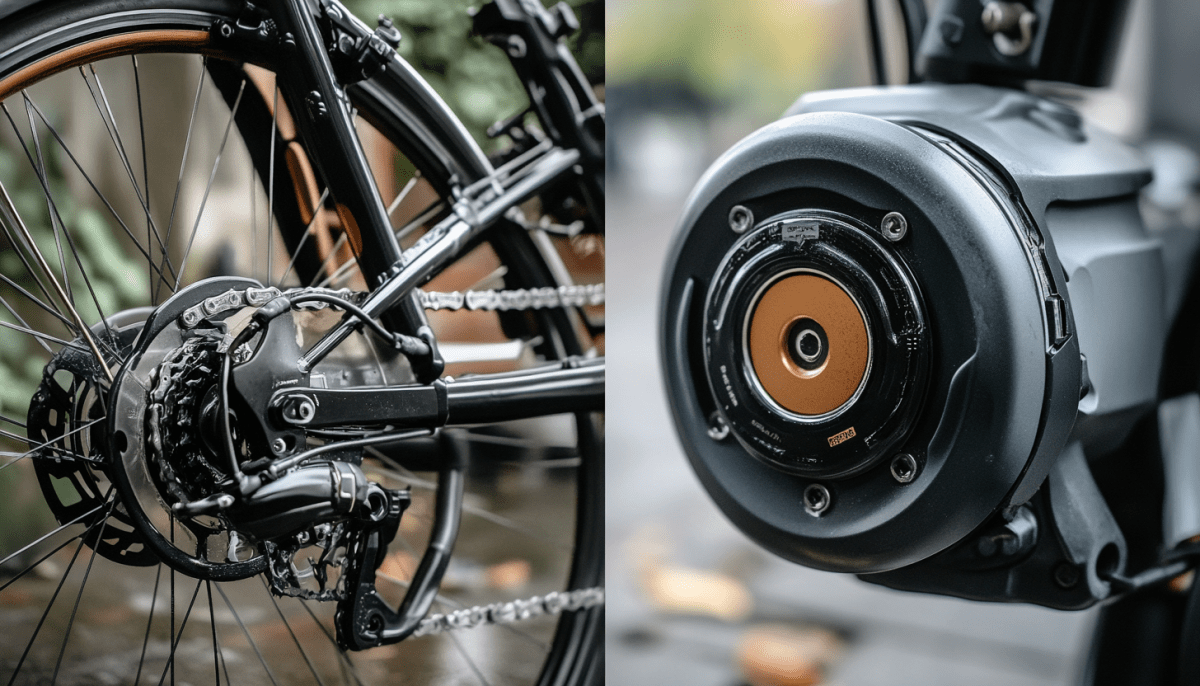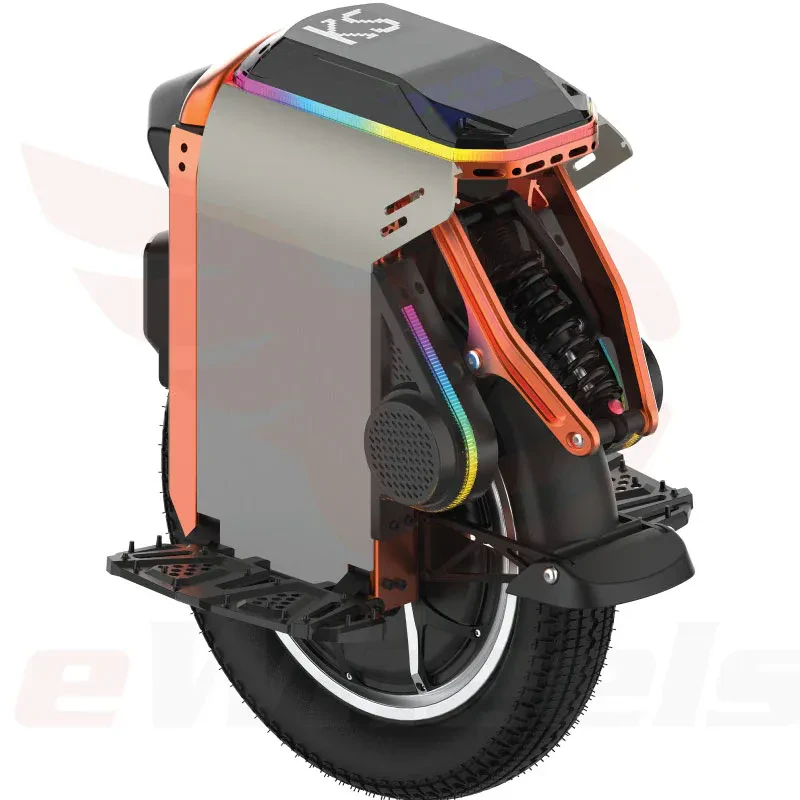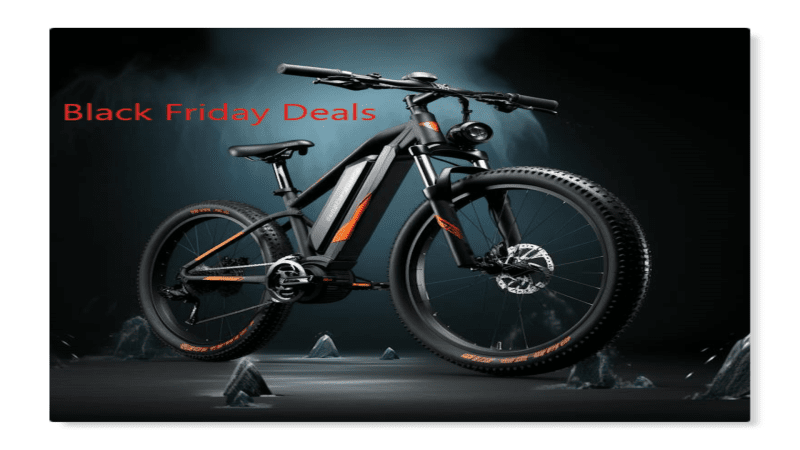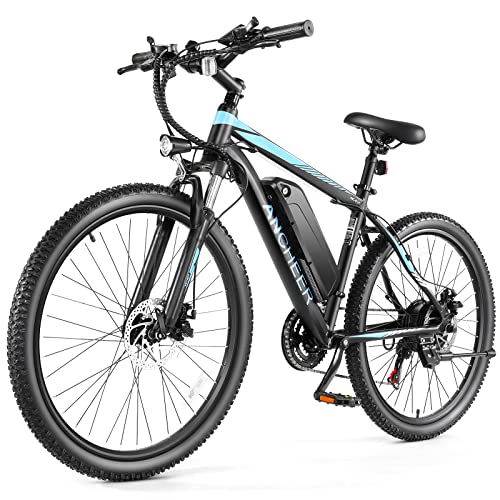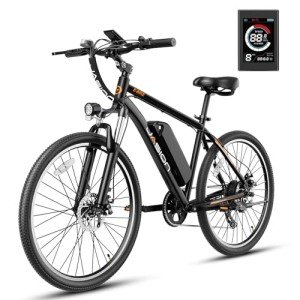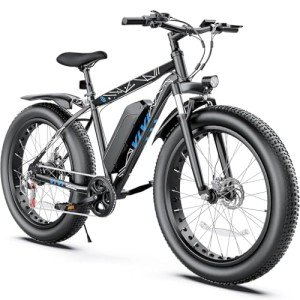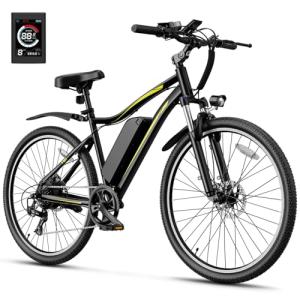Imagine cruising down a city street, effortlessly gliding past traffic, or conquering a steep mountain trail with ease. That's the magic of e-bikes! But here's the kicker - the heart of your e-bike's performance lies in its motor. Whether you're a seasoned rider or a curious newcomer, understanding the difference between hub motors and mid-drive motors is crucial. Let's dive into the world of e-bike motors and help you find your perfect match!
As the popularity of electric bikes continues to soar, riders are faced with an important decision: choosing between hub motors and mid-drive motors. This choice can significantly impact your riding experience, performance, and overall satisfaction with your e-bike. In this comprehensive guide, we'll explore the pros and cons of both motor types, helping you make an informed decision that aligns with your cycling needs and preferences.

What Are Hub Motors and Mid-Drive Motors?
Definition and basic functionality of hub motors
These electric motors are integrated directly into the wheel hub of an e-bike. Hub drive motors are known for their simplicity and straightforward design. They operate by applying power directly to the wheel, propelling the bike forward. This direct power delivery can provide a smooth and consistent ride experience, especially on flat terrain or during commutes.
One of the key advantages is their ease of installation and maintenance. Since the motor is self-contained within the wheel, it doesn't require significant modifications to the bike's frame or drivetrain. This makes hub-drive e-bikes an attractive option for those looking to convert a traditional bike into an electric one. They also allow for the use of a throttle, providing power on demand without the need for pedaling, which can be particularly useful in stop-and-go traffic or when starting from a complete stop.
Explanation of mid-drive motor technology
Mid-drive motors are positioned at the center of the e-bike where the pedals are attached. This central location allows the motor to integrate with the bike's existing drivetrain, utilizing the bike's gears to optimize power output and efficiency. The work by applying force to the chain, which then drives the rear wheel, mimicking the natural pedaling motion of a traditional bike.
The placement offers several advantages in terms of weight distribution and handling. By centering the motor's mass low and in the middle of the frame, mid-drive e-bikes often feel more balanced and agile compared to their hub-drive counterparts. This improved weight distribution can enhance the overall ride experience, particularly when navigating challenging terrain or taking on steep inclines. They tend to provide a more natural riding feel, as the power is delivered through your own pedaling efforts.
Key differences in design and placement
The most obvious difference between the two is their placement on the e-bike. Hub motors are integrated into either the front or rear wheel, while mid-drive motors are centrally located near the pedals. This distinction in design leads to significant differences in how power is delivered to the bike and how it affects the overall riding experience. Hub motors apply power directly to the wheel, bypassing the bike's gearing system, while mid-drive motors work in conjunction with the bike's existing drivetrain.
Another key difference lies in the way these motor types interact with the bike's components. Hub motors are relatively self-contained and have minimal impact on other drivetrain parts. In contrast, mid-drive motors put additional stress on the chain, cassette, and derailleur due to the increased power being channeled through these components. This can lead to faster wear and potentially more frequent maintenance for mid-drive e-bikes. However, the trade-off is often superior performance, especially in challenging riding conditions or on varied terrain.
The Power of Hub Motors: Advantages and Disadvantages
Simplicity and ease of maintenance
One of the most significant advantages is their simplicity and ease of maintenance. Hub-drive e-bikes are designed with fewer moving parts and a more straightforward power delivery system, making them less prone to complex mechanical issues. This simplicity translates to lower maintenance requirements and potentially fewer visits to the bike shop for repairs. Bikers who prefer a low-maintenance electric bike option, hub motors can be an attractive choice.
The self-contained nature also means that servicing the motor itself is generally less intrusive. In many cases, repairs or replacements can be done by simply removing the wheel, without the need to disassemble other parts of the bike. This can be particularly advantageous for anyone comfortable with basic bike maintenance and want to handle minor issues on their own. The simplicity of hub motors often results in quieter operation compared to mid-drive systems, contributing to a more serene riding experience.
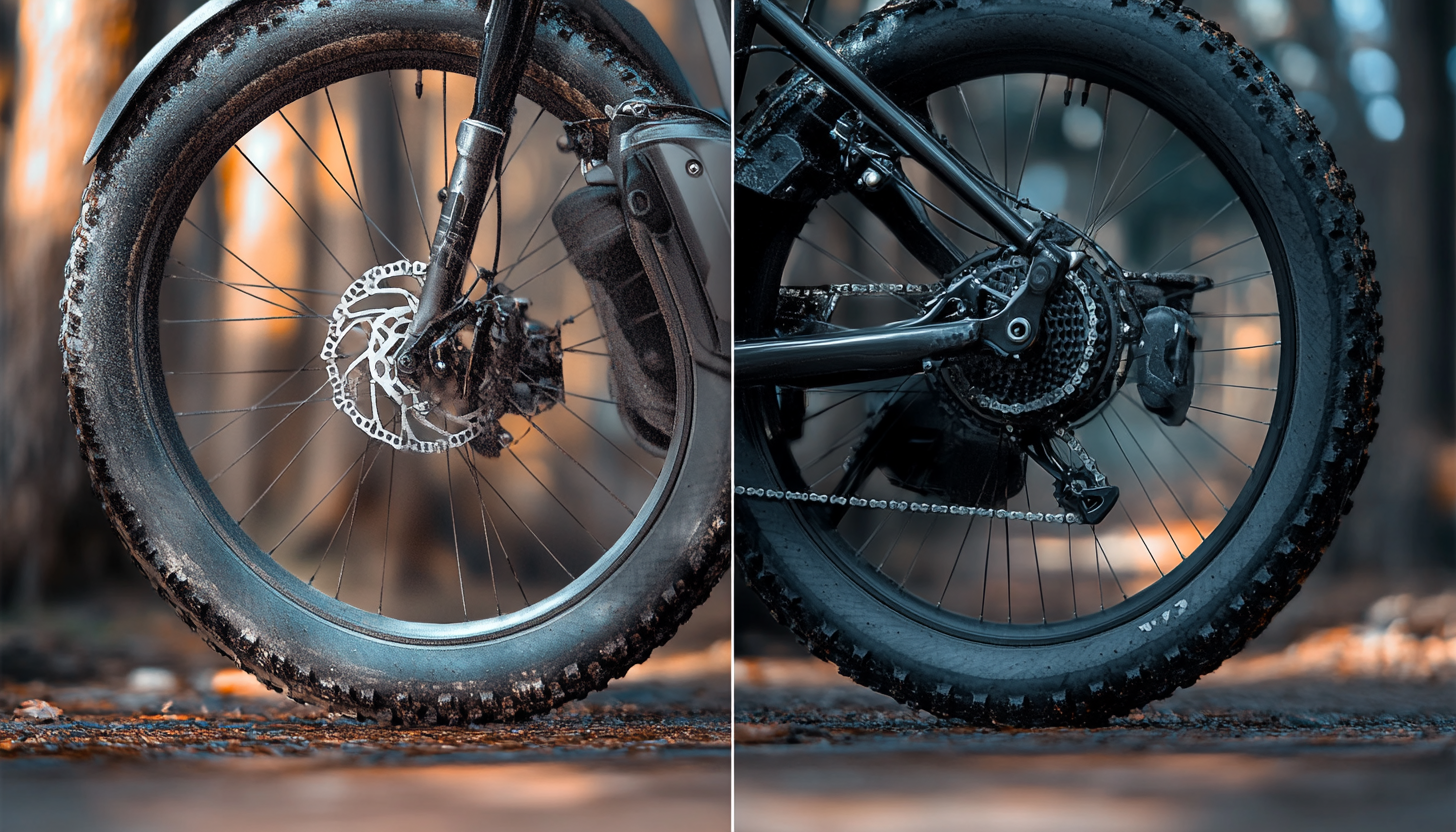
Cost-effectiveness for the budget-conscious
Hub motors typically offer a more cost-effective entry point into the world of electric bikes. The simpler design and manufacturing process often translates to lower production costs, which can be passed on to the consumer. This makes hub-drive e-bikes an attractive option for the budget-conscious who want to experience the benefits of electric assistance without breaking the bank. The lower initial purchase price can make electric cycling more accessible to a wider range of potential buyers.
Beyond the initial cost, they can also prove more economical in the long run due to their lower maintenance requirements. With fewer complex components to wear out or replace, hub-drive e-bikes may incur lower service costs over time. This can be particularly appealing for those who use their e-bikes for daily commutes or frequent short trips, where the focus is on reliable, cost-effective transportation rather than high-performance cycling. The combination of a lower upfront cost and potentially reduced long-term expenses make them a compelling choice for value-oriented e-bike enthusiasts.
Impact on bike handling and weight distribution
The placement of the motor in the wheel can have a noticeable impact on an e-bike's handling and weight distribution. They tend to shift more weight towards the back of the bike, which can provide increased traction but may also make the front end feel lighter.
The additional weight of the motor in the wheel can also influence the bike's overall handling characteristics. Some have found out that hub-drive e-bikes feel more stable at higher speeds due to the gyroscopic effect of the heavier wheel. However, this added weight can also make the bike feel less nimble in tight turns or when quick maneuvers are required. It's worth noting that advancements in technology have led to more compact and lightweight designs, mitigating some of these handling concerns. Ultimately, the impact on handling will vary depending on the specific motor design and the rider's preferences and riding style.
Performance on flat terrain and gentle slopes
Hub motors excel in providing smooth and consistent power delivery on flat terrain and gentle slopes. Their direct drive mechanism allows for efficient acceleration and maintenance of speed, making them ideal for urban commuting and leisure riding on relatively even surfaces. Riders often appreciate the seamless assistance provided, which can make pedaling feel effortless and enjoyable, especially over longer distances on flat roads.
The performance of hub motors on gentle slopes is generally satisfactory, providing adequate assistance to help riders conquer small inclines without excessive effort. Many hub-drive e-bikes offer multiple levels of assistance, allowing you to adjust the power output to match the terrain and your personal preferences. This versatility makes them a popular choice for those who primarily ride in urban environments with minimal elevation changes. Additionally, the option to use a throttle on many hub-drive e-bikes can be particularly useful when starting from a stop on a slight incline or when a quick burst of speed is needed.
Limitations in gear utilization and torque output
One of the main limitations of hub motors is their inability to directly utilize the bike's gearing system. Since the motor applies power directly to the wheel, it operates independently of the bike's drivetrain. This means that regardless of which gear you're in, the motor always provides the same level of assistance. As a result, hub-drive e-bikes may struggle to maintain efficiency and power output in situations where gear selection would typically make a significant difference, such as steep climbs or when riding against strong headwinds.
The torque output of hub motors, while sufficient for many riding scenarios, can be limited compared to mid-drive systems. This becomes particularly noticeable when tackling steep inclines or when carrying heavy loads. The fixed gear ratio means they may not be able to provide the optimal balance of speed and power for all riding conditions. However, for riders who primarily stick to flat or gently rolling terrain, the torque limitations of hub motors may not be a significant concern.
Mid-Drive Motors: Where Performance Meets Efficiency
Superior power delivery and torque for hill climbing
Mid-drive motors are renowned for their superior power delivery and torque, especially when it comes to hill climbing. By leveraging the bike's existing gearing system, mid-drive motors can optimize their power output for various terrains and riding conditions. This means that when faced with a steep incline, you can shift to a lower gear, allowing the motor to spin at a higher RPM while delivering maximum torque to the wheels. This efficient use of power makes mid-drive e-bikes particularly adept at conquering challenging hills and mountainous terrain.
The high torque output of the mid-drive translates to impressive climbing abilities, even when carrying heavy loads or riding against strong headwinds. Riders often report feeling a more natural and responsive assistance from mid-drive systems, as the power is applied through the same mechanism as their own pedaling efforts. This synergy between rider input and motor assistance can make tackling steep grades feel less daunting and more enjoyable. For cyclists who live in hilly areas or enjoy off-road adventures, the hill-climbing prowess can be a game-changer, opening up new riding possibilities and extending their range.
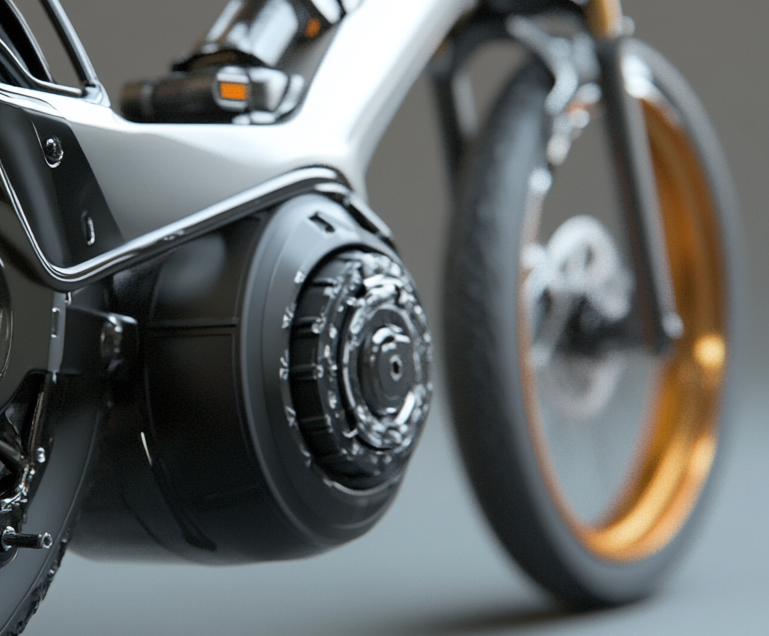
Improved weight distribution and handling
One of the key advantages of mid-drive motors is their central placement on the e-bike frame, typically near the bottom bracket. This positioning results in a lower center of gravity and more balanced compared to hub motors. The improved weight distribution contributes to enhanced handling characteristics, making mid-drive e-bikes feel more nimble and responsive. Quite a few have said that mid-drive e-bikes handle more like traditional bicycles, offering a familiar and confidence-inspiring ride experience.
The centered weight also contributes to better traction and stability, particularly when cornering or navigating technical terrain. This can be especially beneficial for off-road riding or when tackling winding mountain roads. The balanced bike weight makes mid-drive e-bikes easier to maneuver when off the bike, such as when lifting it onto a bike rack or carrying it up stairs. For those who prioritize agile handling and a natural riding feel, this improvement can be a significant factor in your decision-making process.
Efficient use of bike's gearing system
Mid-drive motors excel in their ability to efficiently utilize the bike's existing gearing system. By applying power to the drivetrain rather than directly to the wheel, mid-drive motors can take advantage of the full range of gears available on the bike. This allows you to select the optimal gear ratio for any given situation, whether it's climbing a steep hill, cruising on flat terrain, or descending at high speeds. The result is a more efficient use of both the motor's power and the pedaling put into it.
The integration with the bike's gearing system also means it can maintain a more consistent and efficient operating speed across a wide range of riding conditions. This efficiency translates to improved battery life and extended range compared to hub motors of similar power ratings. You can fine-tune your pedaling and gear selection to maximize the motor's efficiency, potentially squeezing more miles out of each battery charge. For long-distance cyclists or those who prioritize range and efficiency, the ability of mid-drive motors to work harmoniously with the bike's gearing can be a significant advantage.
Considerations for maintenance and potential wear on drivetrain
While mid-drive motors offer numerous performance benefits, they do come with some additional maintenance considerations. The increased power being channeled through the bike's drivetrain can lead to accelerated wear on components such as the chain, cassette, and derailleur. This means that you may need to replace these parts more frequently compared to traditional bicycles or hub-drive e-bikes. Regular maintenance and timely replacement of worn components are crucial to ensuring the longevity and optimal performance of a mid-drive e-bike system.
Additionally, the complexity of mid-drive systems can make certain repairs more challenging and potentially more expensive. Servicing a mid-drive often requires specialized knowledge and tools, which may necessitate professional assistance rather than DIY repairs. However, many have found that the performance benefits outweigh these maintenance considerations. It's also worth noting that advancements in mid-drive technology have led to more durable and reliable systems, with some manufacturers offering extended warranties to address concerns about long-term reliability and maintenance costs.
Higher cost compared to hub systems
One of the primary drawbacks of mid-drive motors is their generally higher cost compared to the hub systems. The more complex design, integration with the bike's drivetrain, and advanced technology typically result in a higher price point for mid-drive e-bikes. This cost difference can be significant, sometimes amounting to several hundred dollars or more when comparing similar quality bikes with different motor types. For the budget-conscious, this higher initial investment can be a deterrent, potentially making mid-drive e-bikes less accessible.
However, it's important to consider the long-term value proposition. While the upfront cost may be higher, the improved efficiency, performance, and potentially longer lifespan of mid-drive systems can offer better value over time. Those who frequently tackle challenging terrain, ride long distances, or use their e-bike as a primary mode of transportation may find that the benefits of a mid-drive motor justify the additional expense. Additionally, as mid-drive technology continues to evolve and become more widespread, we may see a gradual reduction in the cost difference between mid-drive and hub motor systems in the future.
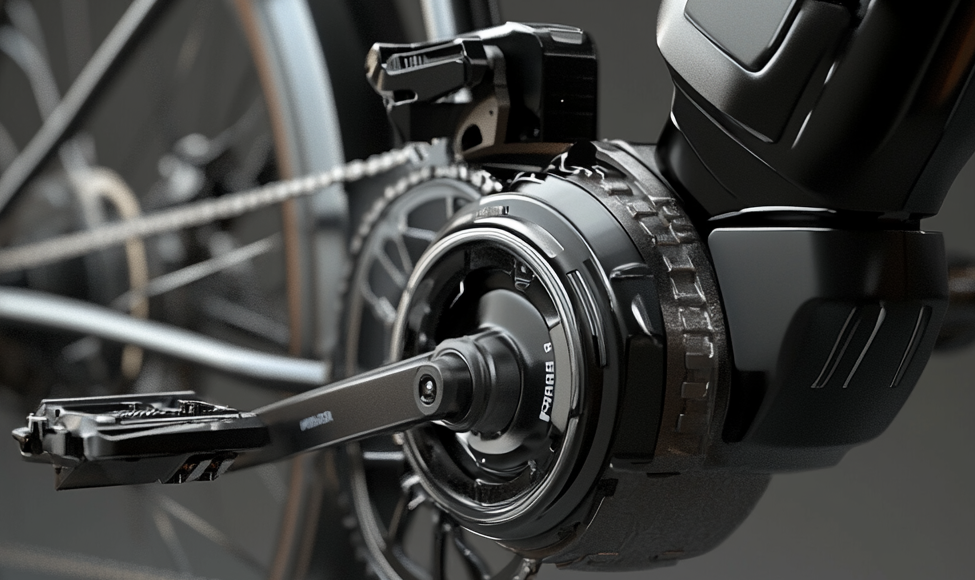
Riding Experience: How Motor Choice Affects Your Journey
Differences in acceleration and top speed
The choice between hub-drive motors and mid-drive motors can significantly impact an e-bike's acceleration and top speed characteristics. Hub motors, particularly direct drive versions, often provide smooth and consistent acceleration from a standing start. This can be especially noticeable when using a throttle, as rear hub motors can deliver instant power to the wheel. However, it may struggle to maintain high speeds on inclines or against strong headwinds due to their fixed gear ratio.
Mid-drive motors, on the other hand, tend to offer more dynamic acceleration, especially when paired with appropriate gear selection. The ability to shift gears allows you to optimize the motor's power output for different speeds and terrain conditions. This can result in quicker acceleration when needed and better maintenance of high speeds across varied terrain. Additionally, the natural feel of power delivery through the drivetrain often leads to a more engaging riding experience, closely mimicking the sensation of riding a traditional bike but with added assistance.
Impact on battery life and range
Battery life and range are crucial factors for many e-bike riders, and the choice of motor type can have a significant impact on these aspects. Hub motors, while efficient on flat terrain, may drain the battery more quickly when faced with hills or headwinds due to their inability to utilize the bike's gearing system. This can result in reduced range, especially if you're in hilly areas or those who frequently encounter challenging conditions.
Mid-drive motors generally offer better overall efficiency and, consequently, improved battery life and range. By leveraging the bike's gears, mid-drive systems can maintain an optimal motor speed across various riding conditions, leading to more efficient power usage. This efficiency can translate to longer rides on a single charge, which is particularly beneficial for long-distance cyclists or commuters who need to maximize their range. However, it's worth noting that aggressive use of a mid-drive motor's power, especially on challenging terrain, can still deplete the battery quickly if not managed carefully.
Noise levels and ride comfort
The noise levels produced by e-bike motors can significantly affect the overall riding experience. Hub motors, especially geared versions, tend to be quieter in operation. The motor's enclosure within the wheel hub helps to muffle any mechanical sounds, resulting in a nearly silent ride. This can be particularly appealing for those who value a peaceful cycling experience or those who use their e-bikes in noise-sensitive environments.
Mid-drives have seen significant improvements in recent years. Modern mid-drive systems often produce a low hum or whir, which many find unpleasant. The noise level can vary depending on the power output and the specific motor model. In terms of ride comfort, mid-drive e-bikes often provide a more balanced feel due to their centered weight distribution. This can lead to improved handling and a smoother ride, especially on uneven terrain. Ultimately, the perception of noise and comfort is subjective and can vary from person to person.
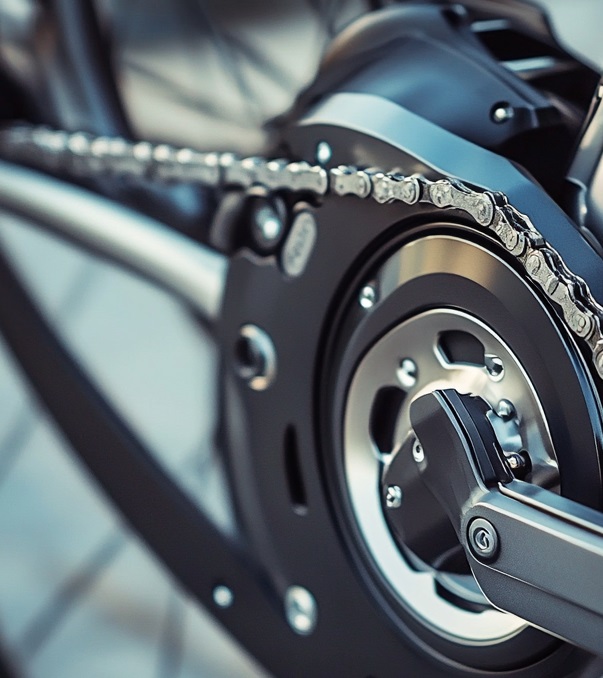
Suitability for various terrains (urban, off-road, mountainous)
The suitability of hub motors and mid-drive motors for different terrains is a crucial consideration for many. Hub motors excel in urban environments and on relatively flat terrain. Their smooth power delivery and simplicity make them ideal for commuting and leisure riding in city or suburban settings. Hub-drive e-bikes can easily handle gentle slopes and provide consistent performance on well-maintained paths and roads.
Mid-drive bikes, however, shine in more challenging and varied terrain. Their ability to leverage the bike's gearing system makes them particularly well-suited for off-road adventures and mountainous regions. The superior torque output and efficient power delivery of the mid-drive allows you to tackle steep inclines and technical trails with greater ease. For those who enjoy mountain biking or frequently encounter diverse terrain, mid-drive e-bikes offer the versatility and performance needed to handle a wide range of riding conditions. Ultimately, the choice between hub and mid should be based on your typical riding environment and the type of terrain they expect to encounter most often.
Maintenance and Longevity: Keeping Your E-Bike Rolling
Ease of wheel removal and tire changes with different motor types
The ease of wheel removal and tire changes can vary significantly between hub-drive and mid-drive e-bikes. Hub motors, being integrated into the wheel, can make these routine maintenance tasks more challenging. Removing a wheel often involves disconnecting wires and dealing with the added weight of the motor. Changing a tire on a hub-drive wheel requires extra care to avoid damaging the motor or wiring.
Mid-drive e-bikes, on the other hand, typically allow for easier wheel removal and tire changes. Since the motor is separate from the wheels, these tasks are similar to those on a traditional bicycle. This can be significant and possibly save you time if you frequently need to change tires or transport your bike in a vehicle that requires wheel removal. The simplicity of wheel maintenance on mid-drive e-bikes can save time and reduce the likelihood of complications during routine upkeep, making them potentially more convenient for some who prefer to handle their own basic maintenance.
Long-term durability and repair considerations
When it comes to long-term durability, both have their strengths and weaknesses. Hub motors, with their simpler design and fewer moving parts, often have a reputation for reliability and longevity. However, if it fails, it typically requires replacing the entire motor unit, which can be costly and may necessitate professional installation.
Mid-drive, while more complex, often offer better serviceability. Many mid-drive systems are designed with modular components that can be individually replaced or repaired. This can lead to lower repair costs in the long run and potentially extend the lifespan of the e-bike system. However, mid-drive motors put additional stress on the bike's drivetrain components, which may require more frequent replacement of parts like chains and cassettes. Riders considering long-term durability should weigh these factors against their riding habits and maintenance preferences to determine which motor type aligns best with their needs.
Availability of replacement parts and qualified technicians
The availability of replacement parts and access to qualified technicians are crucial factors in maintaining an e-bike over time. Hub motors, being more common, often have a wider availability of replacement parts. Many components are standardized, making it easier to find compatible replacements from various manufacturers. This can be advantageous for anyone living in areas with limited access to specialized e-bike shops or those who prefer to source parts independently.
Mid-drive systems, particularly those from major manufacturers, generally have good support networks and parts availability. However, the complexity of the mid-drive may require more specialized knowledge for repairs and maintenance. Those with mid-drive e-bikes might need to rely more heavily on authorized service centers or dealers for major repairs. It's worth researching the support network and parts availability for specific brands and models when considering an e-bike purchase. Additionally, as the e-bike market continues to grow, we're seeing an increase in the number of qualified technicians capable of servicing both hub and mid-drive systems, improving overall support for all types of e-bikes.
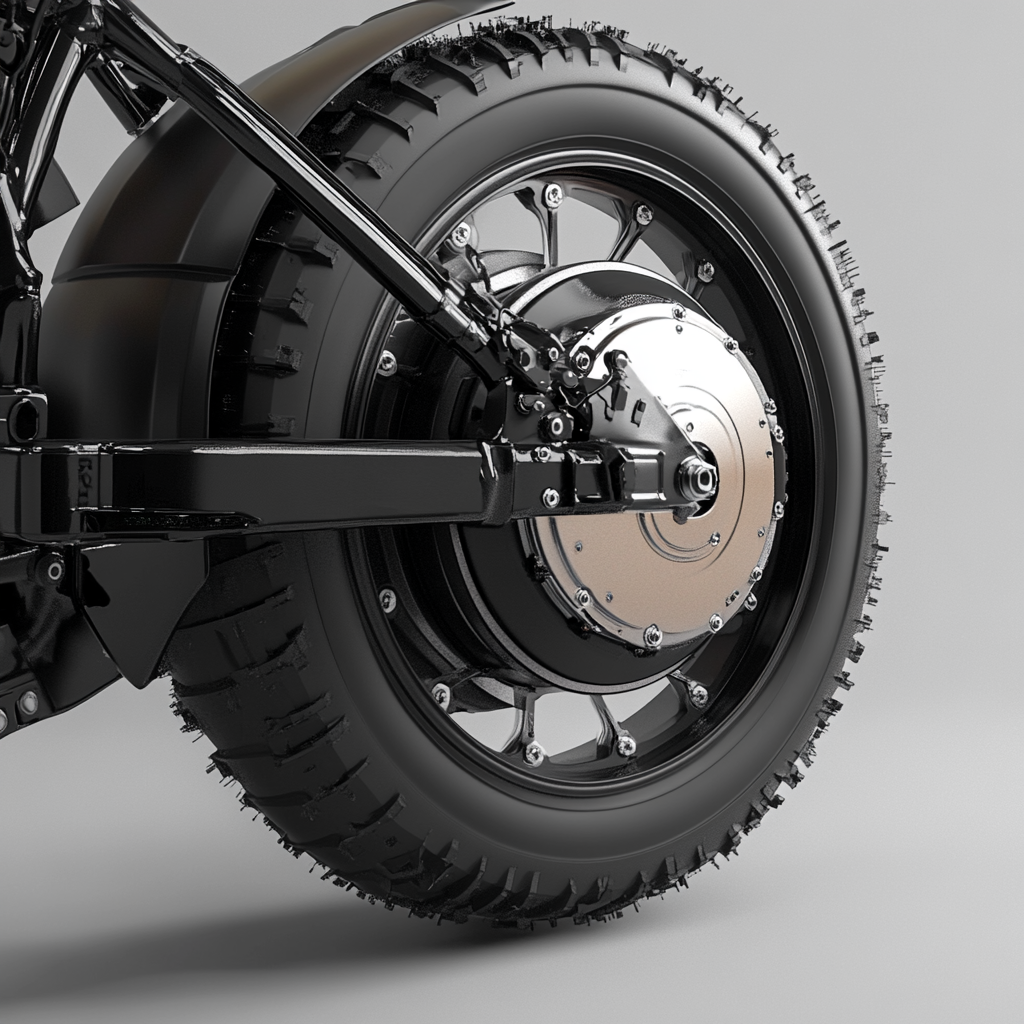
Cost Analysis: Balancing Performance and Budget
Initial purchase price differences
The initial purchase price is often a significant factor in choosing between hub-drive and mid-drive e-bikes. Generally, hub-drive e-bikes tend to be more affordable, making them an attractive option for the budget-conscious buyers or those new to electric cycling. The simpler design and manufacturing process of hub motors contribute to their lower cost. This price advantage can make electric biking more accessible to a wider range of consumers, potentially encouraging more people to adopt this eco-friendly mode of transportation.
Mid-drive e-bikes, on the other hand, typically come with a higher price tag. The advanced technology, integration with the bike's drivetrain, and often higher-quality components contribute to the increased cost. While the price difference can be substantial, many find that the performance benefits of mid-drive systems justify the additional expense. It's important to consider that the initial purchase price is just one aspect of the overall cost of ownership. Factors such as efficiency, maintenance requirements, and longevity should also be taken into account when evaluating the true cost of an e-bike over its lifetime.
Long-term cost considerations (maintenance, repairs, upgrades)
When evaluating the long-term costs of hub-drive versus mid-drive e-bikes, several factors come into play. Hub motors generally require less maintenance due to their simpler design, which can lead to lower ongoing costs. However, if it fails, the entire unit often needs to be replaced, which can be expensive. Additionally, the potential impact on handling may lead some to upgrade to higher-quality wheels or tires, adding to the long-term costs.
Mid-drive systems, while potentially more expensive upfront, can offer advantages in terms of long-term cost efficiency. The ability to leverage the bike's gearing system often results in better overall efficiency, which can extend the life of the battery and reduce energy costs. Mid-drive motors can put additional stress on the drivetrain, potentially leading to more frequent replacements of chains, cassettes, and other components. Upgrades to mid-drive systems can also be more costly due to their complexity. You should really consider your maintenance skills, riding habits, and local service options when evaluating the long-term cost implications of each motor type.
Value for money based on riding needs and preferences
Determining the value for money of hub-drive versus mid-drive e-bikes ultimately comes down to individual riding needs and preferences. For urban commuters or casual riders who primarily cycle on flat terrain, a hub-drive e-bike may offer excellent value. The lower initial cost, combined with adequate performance for their needs, can make hub motors a cost-effective choice. Additionally, the simplicity and low maintenance requirements can contribute to their overall value proposition for those who prioritize convenience.
For enthusiasts, or those tackling varied terrain, mid-drive e-bikes often provide better value despite their higher cost. The superior performance, especially on hills and challenging terrain, can significantly enhance the riding experience. The efficient power delivery and natural riding feel of mid-drive systems may justify the additional expense for riders who spend a lot of time on their e-bikes. The potential for better long-term efficiency and the ability to tackle a wider range of riding conditions can make mid-drive e-bikes a worthwhile investment for dedicated cyclists. Ultimately, you should assess your specific needs, riding environment, and budget to determine which motor type offers the best value for your individual circumstances.
Making the Right Choice: Factors to Consider
Your primary riding terrain and style
One of the most crucial factors in choosing between the two is your primary riding terrain and style. If you mostly ride on flat or gently rolling terrain in urban or suburban areas, a hub motor might be perfectly suitable for your needs. They excel in providing smooth, consistent power on level ground and can handle mild inclines with ease. They're often ideal for commuters who value simplicity and reliability for their daily rides.
On the other hand, if your riding frequently involves steep hills, off-road trails, or varied terrain, the mid-drive might be the better choice. The ability to leverage the bike's gearing system makes them superior performers on challenging terrain. They provide better climbing ability and more efficient power delivery across a range of conditions. For mountain bikers, adventure cyclists, or those living in hilly areas, the performance advantages of mid-drive motors can significantly enhance the riding experience and extend the range of terrain you can comfortably tackle.
Fitness level and desired level of assistance
Your personal fitness level and the amount of electric assistance you desire should play a role in your motor choice. Hub motors, especially those with throttle options, can provide a high level of assistance with minimal effort from you. This can be beneficial for those with lower fitness levels or those who primarily use their e-bike as a means of transportation rather than exercise. The consistent power delivery can make longer rides more manageable for less experienced cyclists.
Mid-drive motors, while still providing significant assistance, often encourage a more active riding style. The natural feel of power delivery through the drivetrain can motivate riders to pedal more, potentially leading to improved fitness over time. For cyclists who view their e-bike as a way to enhance their workouts or gradually build stamina, a mid-drive system might be more aligned with their goals. The more nuanced power delivery of the mid-drive allows for finer control over the level of assistance, which can be appealing to riders who want to tailor their effort level precisely to their fitness goals or riding conditions.
Budget constraints and long-term investment plans
Budget considerations are often a significant factor in the decision between hub and mid-drive. Hub motor e-bikes generally come with a lower price tag, making them more accessible to riders on a tight budget or those unsure about committing to a more expensive electric bike. The lower initial investment can be particularly appealing for first-time e-bike buyers or those using their electric bike for occasional rides. If you're working with limited funds but still want to experience the benefits of electric cycling, a hub motor e-bike can offer good value for money.
Mid-drive e-bikes, while typically more expensive upfront, can be viewed as a long-term investment for dedicated cyclists. The superior performance, efficiency, and versatility of mid-drive systems can provide better value over time for riders who use their e-bikes frequently or plan to keep them for many years. If you have the budget and see your e-bike as a significant part of your lifestyle or transportation strategy, investing in a mid-drive system might be worthwhile. Consider your long-term plans for electric cycling and whether the additional features and performance of a mid-drive motor align with your future riding goals and expectations.
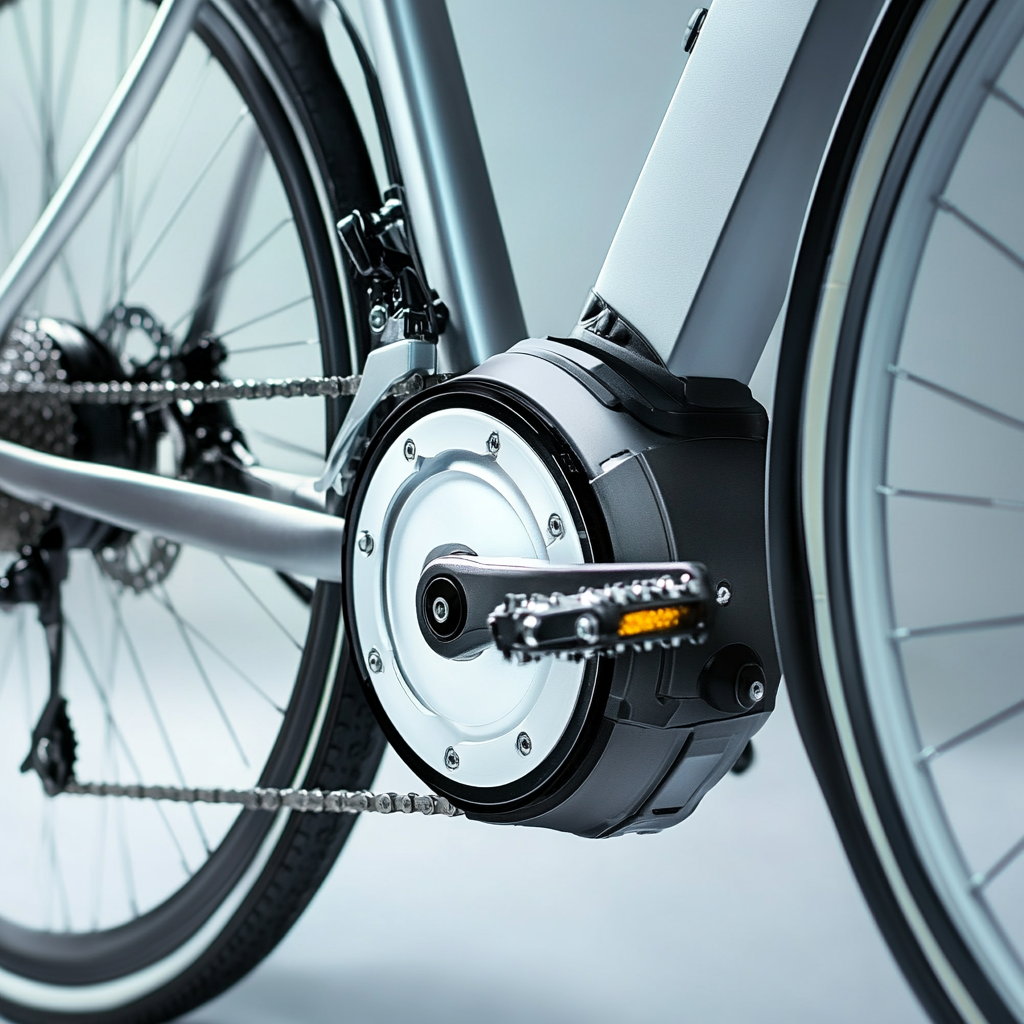
Importance of bike handling and weight
The importance you place on bike handling and weight should influence your choice between hub and mid-drive motors. Hub motors, can affect the bike's weight distribution and handling characteristics. The added weight in the wheel can make the bike feel less agile, particularly noticeable during quick turns or when maneuvering at low speeds.
Mid-drive motors offer better weight distribution due to their central location on the bike frame. This results in handling that more closely resembles that of a traditional bicycle, which can be a significant advantage for riders who value agility and responsive steering. The lower center of gravity provided by mid-drive motors can improve stability on varied terrain and during cornering. If you prioritize a natural riding feel and plan to tackle technical trails or winding roads, the improved handling characteristics of a mid-drive e-bike might be more suited to your preferences. Consider test-riding both types of e-bikes to experience the difference in handling firsthand and determine which feels more comfortable and confidence-inspiring for your riding style.
Conclusion: Choosing between hub or mid isn't just about specs - it's about finding your perfect ride! Whether you're tackling urban jungles or conquering mountain trails, there's an e-bike motor that's right for you. Remember, the best motor is the one that matches your riding style, terrain, and budget. So, are you ready to electrify your rides? The e-bike revolution is here, and it's time for you to join the fun! Don't just dream about effortless climbs and exhilarating rides - make it happen. Your perfect e-bike adventure awaits!
